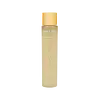What's inside
What's inside
 Key Ingredients
Key Ingredients

 Benefits
Benefits

 Concerns
Concerns

 Ingredients Side-by-side
Ingredients Side-by-side

Acer Saccharum Sap
HumectantButylene Glycol
HumectantGlycerin
Humectant1,2-Hexanediol
Skin ConditioningWater
Skin ConditioningPEG-8
HumectantSea Water
HumectantGlycine Soja Seed Extract
Skin ConditioningTriticum Vulgare Flour Extract
Skin ConditioningOryza Sativa Bran Extract
Skin ConditioningOryza Sativa Extract
AbsorbentZea Mays Germ Extract
Skin ConditioningPinus Sylvestris Bark Extract
PerfumingBetula Alba Bark/Leaf Extract
AstringentRibes Nigrum Fruit Extract
AstringentOlea Europaea Fruit Extract
BleachingVaccinium Vitis-Idaea Fruit Extract
AntioxidantCastanea Sativa Bark Extract
Skin ConditioningVitis Vinifera Fruit Extract
Skin ConditioningSodium Hyaluronate
HumectantBiosaccharide Gum-4
Skin ConditioningCentella Asiatica Leaf Extract
Skin ConditioningFructan
Skin ConditioningCreatine
Skin ConditioningPanthenol
Skin ConditioningCaprylyl Glycol
EmollientSodium Gluconate
Skin ConditioningSodium Lactate
BufferingPropylene Glycol
HumectantSodium Chloride
MaskingArginine
MaskingCarbomer
Emulsion StabilisingHydroxypropyl Methylcellulose
Emulsion StabilisingPEG-60 Hydrogenated Castor Oil
EmulsifyingTocopheryl Acetate
AntioxidantParfum
MaskingAcer Saccharum Sap, Butylene Glycol, Glycerin, 1,2-Hexanediol, Water, PEG-8, Sea Water, Glycine Soja Seed Extract, Triticum Vulgare Flour Extract, Oryza Sativa Bran Extract, Oryza Sativa Extract, Zea Mays Germ Extract, Pinus Sylvestris Bark Extract, Betula Alba Bark/Leaf Extract, Ribes Nigrum Fruit Extract, Olea Europaea Fruit Extract, Vaccinium Vitis-Idaea Fruit Extract, Castanea Sativa Bark Extract, Vitis Vinifera Fruit Extract, Sodium Hyaluronate, Biosaccharide Gum-4, Centella Asiatica Leaf Extract, Fructan, Creatine, Panthenol, Caprylyl Glycol, Sodium Gluconate, Sodium Lactate, Propylene Glycol, Sodium Chloride, Arginine, Carbomer, Hydroxypropyl Methylcellulose, PEG-60 Hydrogenated Castor Oil, Tocopheryl Acetate, Parfum
Bifida Ferment Lysate
Skin ConditioningSaccharomyces Ferment Filtrate
HumectantBetula Alba Juice
AstringentRice Ferment Filtrate
Skin ConditioningWater
Skin ConditioningAspergillus Ferment
Skin ConditioningPropanediol
SolventPolyglyceryl-4 Caprate
Emulsifying1,2-Hexanediol
Skin ConditioningGlycereth-25 PCA Isostearate
EmulsifyingCamellia Sinensis Leaf Extract
AntimicrobialEthylhexylglycerin
Skin ConditioningSodium Lactate
BufferingSodium Gluconate
Skin ConditioningAllantoin
Skin ConditioningLactobacillus
Skin ConditioningDisodium EDTA
Tromethamine
BufferingMentha Piperita Oil
MaskingGluconolactone
Skin ConditioningSalicylic Acid
MaskingPanthenol
Skin ConditioningCapryloyl Salicylic Acid
ExfoliatingGlycolic Acid
BufferingButylene Glycol
HumectantHyaluronic Acid
HumectantHydrolyzed Hyaluronic Acid
HumectantSodium Hyaluronate
HumectantBifida Ferment Lysate, Saccharomyces Ferment Filtrate, Betula Alba Juice, Rice Ferment Filtrate, Water, Aspergillus Ferment, Propanediol, Polyglyceryl-4 Caprate, 1,2-Hexanediol, Glycereth-25 PCA Isostearate, Camellia Sinensis Leaf Extract, Ethylhexylglycerin, Sodium Lactate, Sodium Gluconate, Allantoin, Lactobacillus, Disodium EDTA, Tromethamine, Mentha Piperita Oil, Gluconolactone, Salicylic Acid, Panthenol, Capryloyl Salicylic Acid, Glycolic Acid, Butylene Glycol, Hyaluronic Acid, Hydrolyzed Hyaluronic Acid, Sodium Hyaluronate
 Reviews
Reviews

Alternatives
Ingredients Explained
These ingredients are found in both products.
Ingredients higher up in an ingredient list are typically present in a larger amount.
1,2-Hexanediol is a synthetic liquid and another multi-functional powerhouse.
It is a:
- Humectant, drawing moisture into the skin
- Emollient, helping to soften skin
- Solvent, dispersing and stabilizing formulas
- Preservative booster, enhancing the antimicrobial activity of other preservatives
Butylene Glycol (or BG) is used within cosmetic products for a few different reasons:
Overall, Butylene Glycol is a safe and well-rounded ingredient that works well with other ingredients.
Though this ingredient works well with most skin types, some people with sensitive skin may experience a reaction such as allergic rashes, closed comedones, or itchiness.
Learn more about Butylene GlycolPanthenol is a common ingredient that helps hydrate and soothe the skin. It is found naturally in our skin and hair.
There are two forms of panthenol: D and L.
D-panthenol is also known as dexpanthenol. Most cosmetics use dexpanthenol or a mixture of D and L-panthenol.
Panthenol is famous due to its ability to go deeper into the skin's layers. Using this ingredient has numerous pros (and no cons):
Like hyaluronic acid, panthenol is a humectant. Humectants are able to bind and hold large amounts of water to keep skin hydrated.
This ingredient works well for wound healing. It works by increasing tissue in the wound and helps close open wounds.
Once oxidized, panthenol converts to pantothenic acid. Panthothenic acid is found in all living cells.
This ingredient is also referred to as pro-vitamin B5.
Learn more about PanthenolThis is the synthetic salt of gluconic acid, a form of PHA and mild exfoliant.
It is mainly used to stabilize oil and butter formulations from going bad. Sodium gluconate is a humectant, pH regulator, and chelating agent.
Chelating agents help neutralize unwanted metals from affecting the formulation.
Sodium gluconate is water-soluble.
Learn more about Sodium GluconateSodium Hyaluronate is hyaluronic acid's salt form. It is commonly derived from the sodium salt of hyaluronic acid.
Like hyaluronic acid, it is great at holding water and acts as a humectant. This makes it a great skin hydrating ingredient.
Sodium Hyaluronate is naturally occurring in our bodies and is mostly found in eye fluid and joints.
These are some other common types of Hyaluronic Acid:
Learn more about Sodium HyaluronateSodium Lactate is the sodium salt of lactic acid, an AHA. It is a humectant and sometimes used to adjust the pH of a product.
This ingredient is part of our skin's NMF, or natural moisturizing factor. Our NMF is essential for the hydration of our top skin layers and plasticity of skin. NMF also influences our skin's natural acid mantle and pH, which protects our skin from harmful bacteria.
High percentages of Sodium Lactate can have an exfoliating effect.
Fun fact: Sodium Lactate is produced from fermented sugar.
Learn more about Sodium LactateWater. It's the most common cosmetic ingredient of all. You'll usually see it at the top of ingredient lists, meaning that it makes up the largest part of the product.
So why is it so popular? Water most often acts as a solvent - this means that it helps dissolve other ingredients into the formulation.
You'll also recognize water as that liquid we all need to stay alive. If you see this, drink a glass of water. Stay hydrated!
Learn more about Water